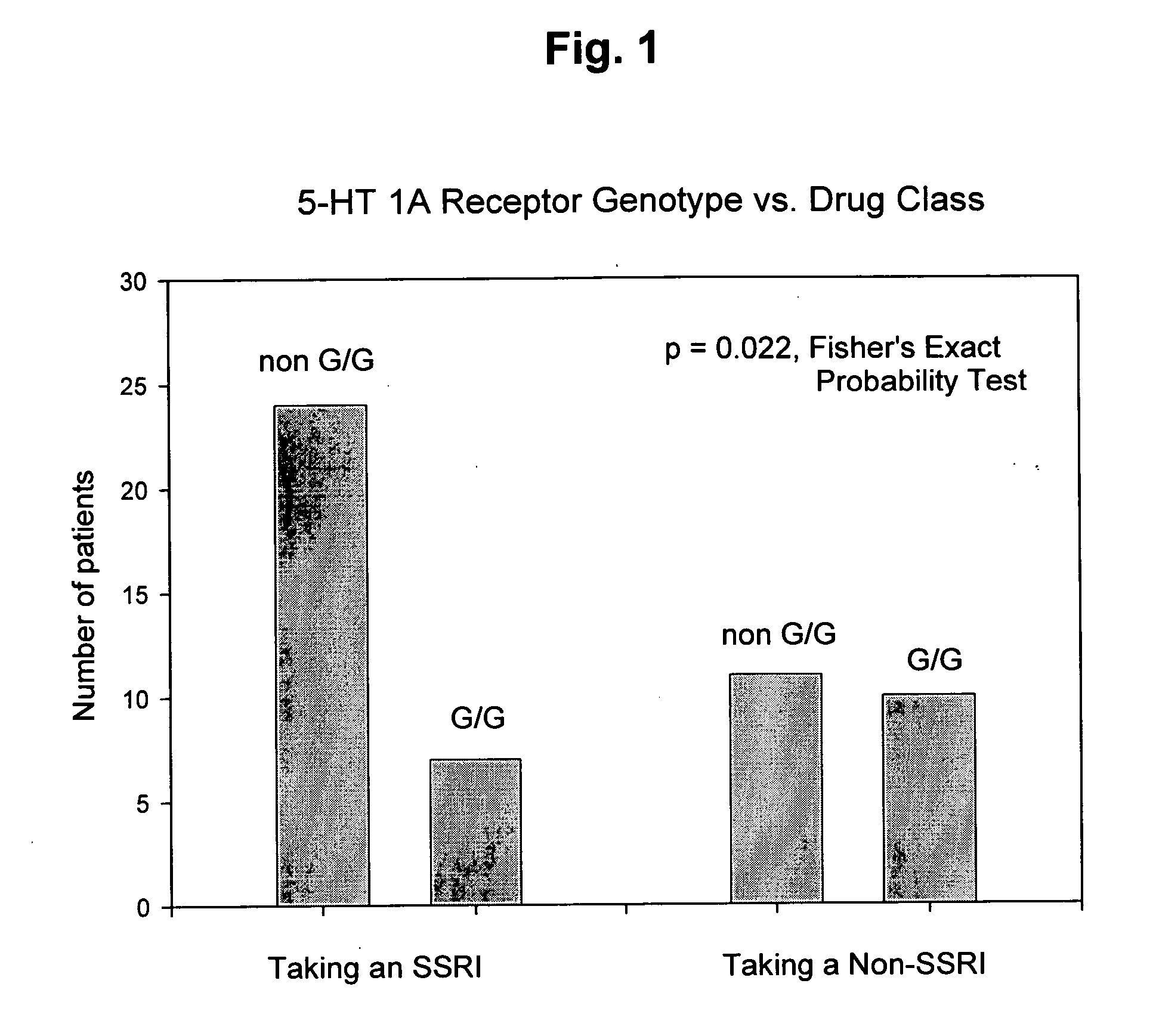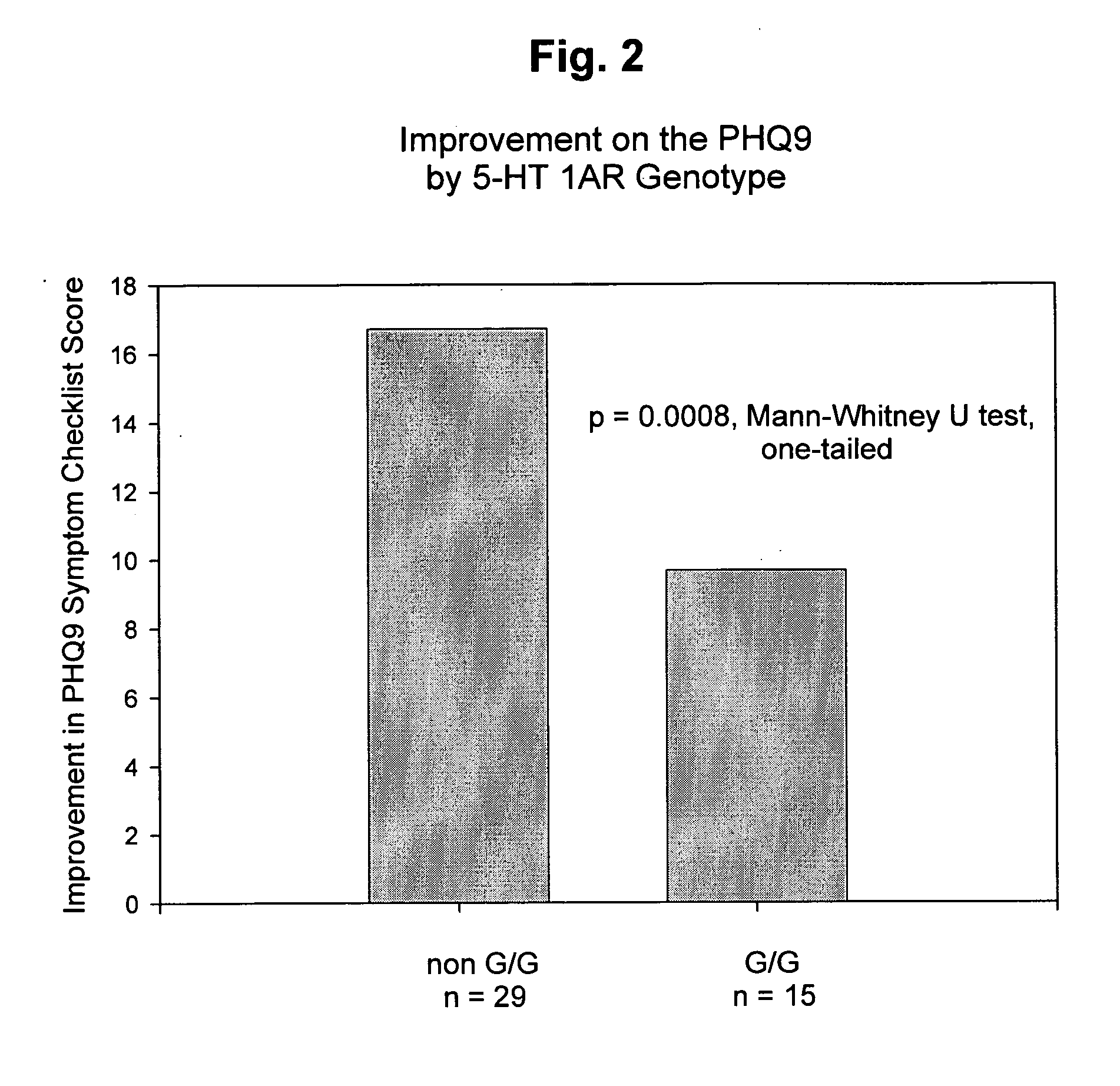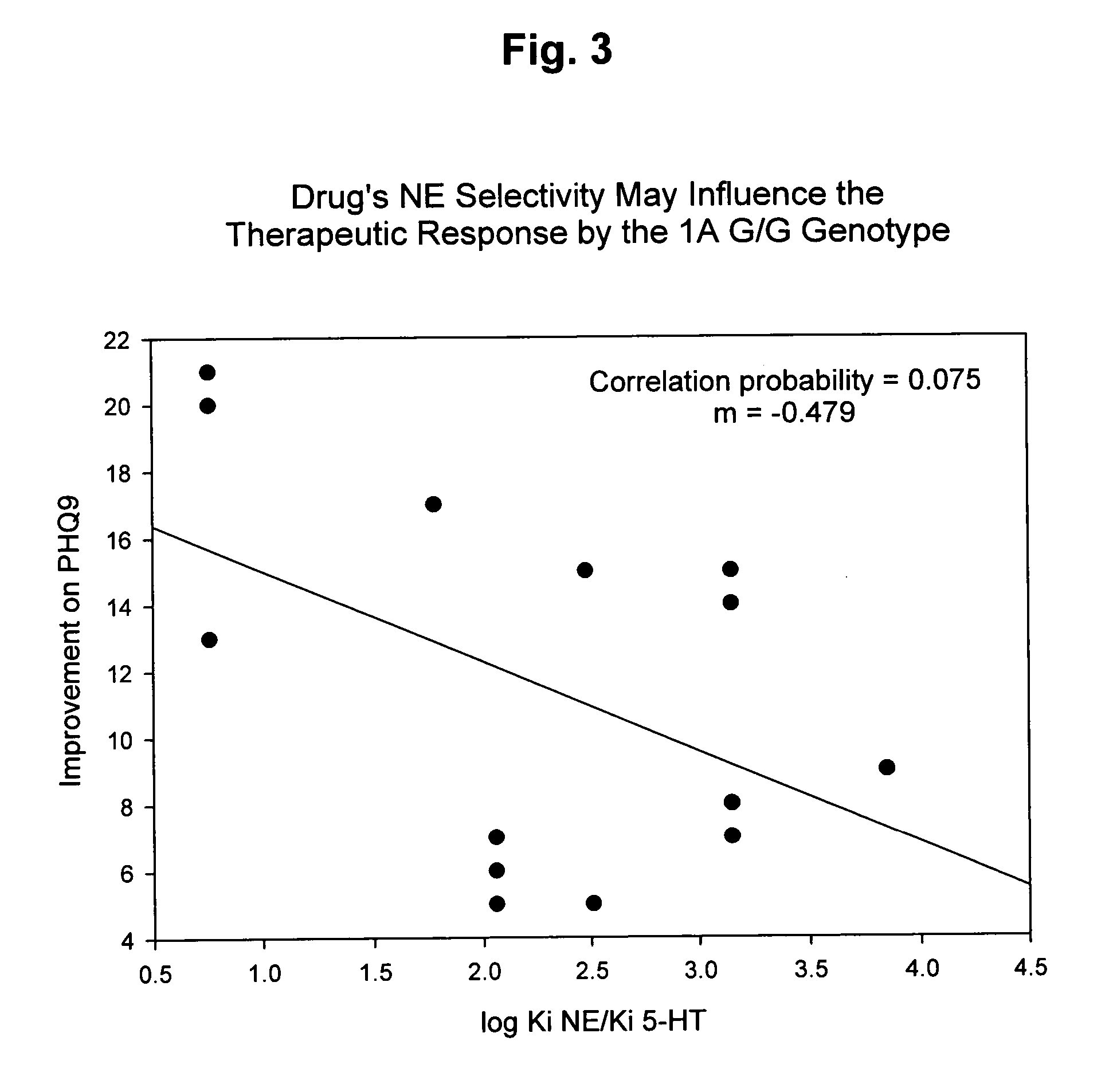Genetic screening for improving treatment of patients diagnosed with depression
a gene screening and treatment technology, applied in the field of gene screening to improve the treatment of patients diagnosed with depression, can solve the problems of increased infection, decreased appetite, sleepiness, abnormal vision, etc., and achieve the effect of reducing the effectiveness of ssri antidepressant therapy and eliciting a favorable physiological respons
- Summary
- Abstract
- Description
- Claims
- Application Information
AI Technical Summary
Benefits of technology
Problems solved by technology
Method used
Image
Examples
examples
[0037] Patients were recruited for the study based upon diagnosis of major depression, administration of anti-depressant medication for a minimum of 6 weeks before the study was initiated, lack of administration of other psychotropic medication, and freedom from serious medical or psychiatric co-morbidity (e.g., unstable medical condition, drug or alcohol abuse, psychosis, serious psychiatric condition other than depression and / or anxiety). Blood was obtained by finger prick and preparation of patient (subject) DNA was performed using the BloodDirect™ PCR Buffer Kit. A one millimeter punch of blood sample from filter paper was suspended in Blood Direct™ PCR Buffer (Novagen) according to manufacturer's directions, along with dNTPs and Taq polymerase in a total volume of 50 μl. DNA was amplified in an Eppendorf Mastercycler gradient PCR for 38 cycles following initial denaturation at 80° C. for 15 minutes. The annealing step was performed for one minute at 63-64° C. for the 5HT1A rece...
PUM
| Property | Measurement | Unit |
|---|---|---|
| volume | aaaaa | aaaaa |
| time | aaaaa | aaaaa |
| length | aaaaa | aaaaa |
Abstract
Description
Claims
Application Information
 Login to View More
Login to View More - R&D
- Intellectual Property
- Life Sciences
- Materials
- Tech Scout
- Unparalleled Data Quality
- Higher Quality Content
- 60% Fewer Hallucinations
Browse by: Latest US Patents, China's latest patents, Technical Efficacy Thesaurus, Application Domain, Technology Topic, Popular Technical Reports.
© 2025 PatSnap. All rights reserved.Legal|Privacy policy|Modern Slavery Act Transparency Statement|Sitemap|About US| Contact US: help@patsnap.com



